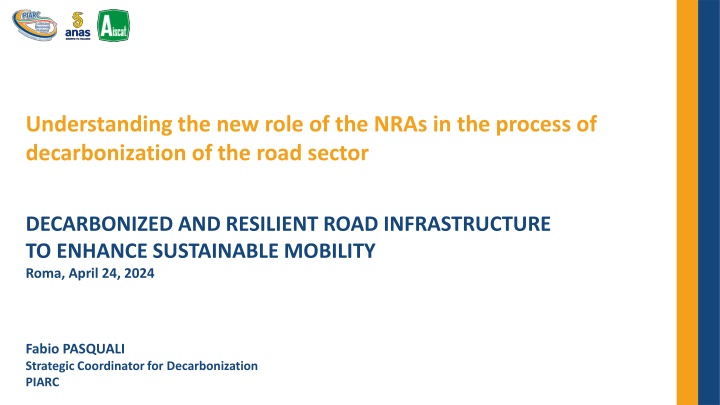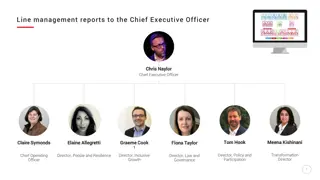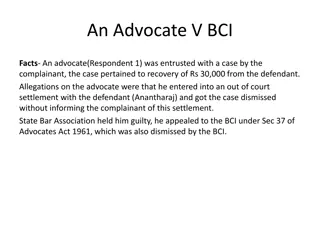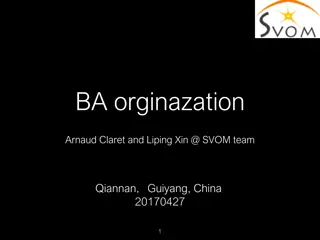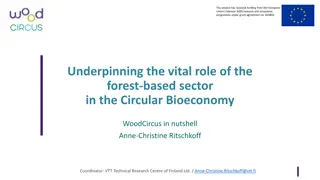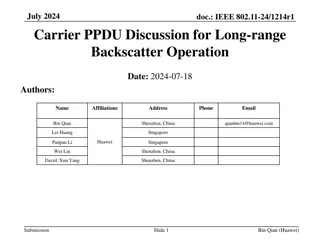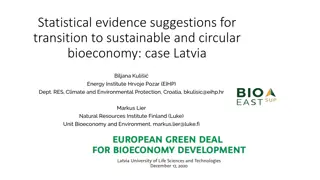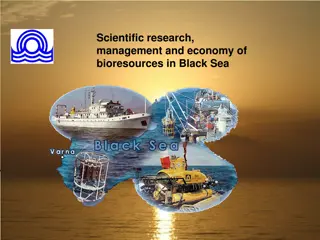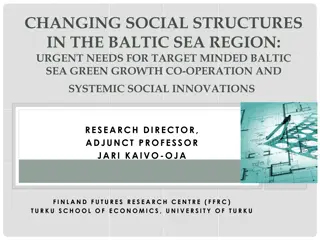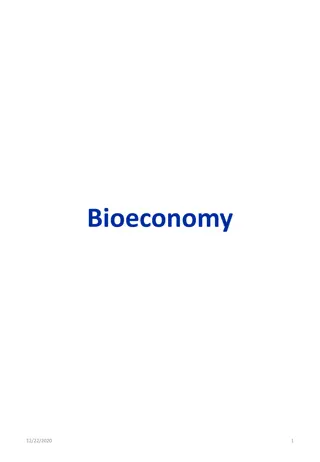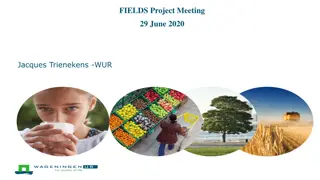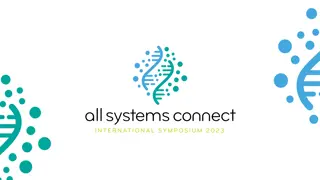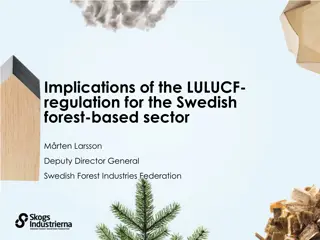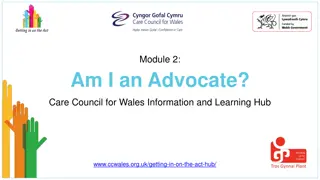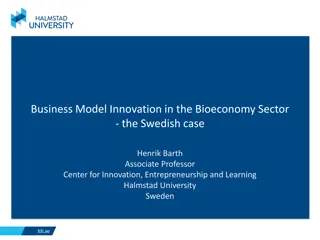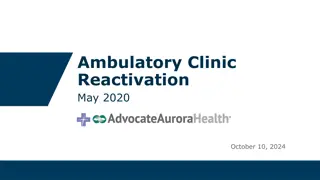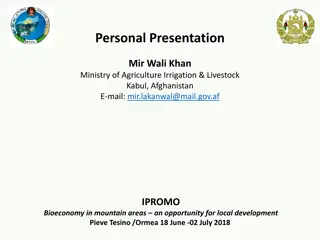Moselantja Rahlao - Range Resources Management Officer and Bioeconomy Advocate
Moselantja Rahlao is a dedicated Range Resources Technical Officer with a background in Biodiversity and Conservation Biology. She actively engages in projects like Wool and Mohair Production, Khubelu Sponges, and Sustainable Land Management, focusing on sustainable practices in rangeland and wetland conservation. Her involvement in civic leadership, entrepreneurship, and sports reflects a well-rounded individual committed to environmental stewardship and community development. Engage with Moselantja for insights into sustainable resource management and local development opportunities.
Download Presentation

Please find below an Image/Link to download the presentation.
The content on the website is provided AS IS for your information and personal use only. It may not be sold, licensed, or shared on other websites without obtaining consent from the author.If you encounter any issues during the download, it is possible that the publisher has removed the file from their server.
You are allowed to download the files provided on this website for personal or commercial use, subject to the condition that they are used lawfully. All files are the property of their respective owners.
The content on the website is provided AS IS for your information and personal use only. It may not be sold, licensed, or shared on other websites without obtaining consent from the author.
E N D
Presentation Transcript
Understanding the new role of the NRAs in the process of decarbonization of the road sector DECARBONIZED AND RESILIENT ROAD INFRASTRUCTURE TO ENHANCE SUSTAINABLE MOBILITY Roma, April 24, 2024 Fabio PASQUALI Strategic Coordinator for Decarbonization PIARC
Decarbonization Decarbonization in the road different different areas areas: users in the road industry : users choices choices, , technology industry is is the technology and the results results of actions in of actions in four and industry industry, policies and four , policies and NRAs NRAs Technology, Technology, industry industry, , vehicles vehicles for the road for the road transport transport Context Context and and mobility mobility behavior behavior (users (users choices choices) ) Mobility of people and goods People Goods Mobility opportunities and options available to the user Public transport Private vehicles cars Other motorised vehicles (motocycles, etc.) Non motorised transport by vehicle (cycle, mopad, ) Walking transport Private commercial vehicles - LHV, MHV and HV Efficiency in mobility of the vehicle Loading efficiency of the vehicle Energy efficiency in driving modes Engine combustion of the vehicle Fossil Energy efficiency of fossil fuel engines Type of fuel used by the fossil fuel engine Energy efficiency of non-fossil engines EV - Electric vehicle FCEV - Full-cell Electric vehicle HEV - Hybrid Electric vehicle PHEV - Plug-in Hybrid Electric vehicle Energy production mix (share of renewables) Diffusion of non-fossil engines Cost of vehicles, in general and compared to fossil- powered vehicles Diffusion of vehicle charging points, charging time and cost In some areas the NRAs have a limited role Areas in which the NRAs can influence the choices at various levels 2 April 24, 2024 DECARBONIZED AND RESILIENT ROAD INFRASTRUCTURE TO ENHANCE SUSTAINABLE MOBILITY
Decarbonization Decarbonization in the road different different areas areas: users in the road industry : users choices choices, , technology industry is is the technology and the results results of actions in of actions in four and industry industry, , NRAs four and policies NRAs and policies National Road National Road Administrations Administrations Policies, public actions, Policies, public actions, communication communication Construction and rehabilitation of road infrastructure Analysis of the possible alternatives to new roads Procurement based on low carbon techniques and materials Low carbon materials for construction Circularity and efficiency of the work site Engagement with suppliers on shared targets/standards Road infrastructure extraordinary and periodic maintenance Low carbon materials for asphalt, etc Low carbon emission machines (mini diggers, etc.) Road infrastructure ordinary operation and maintenance Minimization of congestion Efficient use of the energy for lighting purposes Low carbon emission vehicles fleets Policies Commitments made at international level and/or national programmes Policies prohibiting the use of particular vehicles Direct Indirect Incentive policies regarding the purchase and use of non-fossil vehicles Direct Indirect Communication policies, awareness raising, etc. in other areas the NRAs can or must, depending on the Government - directly act and influence Areas in which the NRAs can influence the choices at various levels 3 April 24, 2024 DECARBONIZED AND RESILIENT ROAD INFRASTRUCTURE TO ENHANCE SUSTAINABLE MOBILITY
Decarbonization Decarbonization starts from the carbon starts from the carbon frootprint organization organization but but this this is is only only part of the picture frootprint of of each each complex complex part of the picture The EU framework is based on the Directive 852/2020 Taxonomy NRAs are treated like a factory in a broad sense, with its own carbon footprint This is not enough: the sum of all the factories , including the upstream and the downstream productions only catches the dimension of the infrastructure in the present Figure included in the presentation by Antonio Muruais (Director for Sustainability in the Road National Administration of Spain) at the World Road Congress of PIARC in Prague, 2023 4 April 24, 2024 DECARBONIZED AND RESILIENT ROAD INFRASTRUCTURE TO ENHANCE SUSTAINABLE MOBILITY
Decarbonization Decarbonization in the road Road Road Administrations Administrations are key players and referees are key players and referees in the road sector sector is is a team playing game in a team playing game in which which the the International players A roadmap for the NRAs Strategy Applied knowledge throughout the processes and the LF Pro-action in standards and practices setting Integration Collaboration Dissemination Government 1. 2. Mobility players 3. NRAs 4. 5. Industry 6. Academia Stakeholders 5 April 24, 2024 DECARBONIZED AND RESILIENT ROAD INFRASTRUCTURE TO ENHANCE SUSTAINABLE MOBILITY
PIARC Strategic Plan 2024 PIARC Strategic Plan 2024- -2027 and the challenge of 2027 and the challenge of decarbonization decarbonization Strategic Theme 3 3.4.1 Air pollution mitigation and zero-emission zones 3.4.3 Innovative and sustainable eco- infrastructure solutions for roads and streets Strategic Theme 1 1.1.1 The transport agency of the future 1.2.1 Summarizing the role of road investment in recent infrastructure investment for de-carbonization 1.3.2 How to make funding and finance de-carbonized: case studies 1.4.1 Development of a resilience framework for road networks, climate change and other hazards Zero Emission Zones Policy Policy, planning, investment, impact analysis Climate Change Adaptation Policy, specific goals, electrified infrastructure, production of energy, energy efficiency TC 3.5 Road Infrastructure for Road Transport Decarbonisation Financing, funding The response of PIARC - Three new Thematic Commettees - Decarbonization included as core topic in many other TCs - Focus of the collection of case studies and best practices - A common agenda for HICs and LMICs, some 30 seminars for building the new agenda in the next four years - The Strategic Coordinator for Decarbonization Climate Change Adaptation Strategic Theme 4 4.1.3 Reducing carbon footprint for pavements 4.2.5 Bridges Low carbon materials 4.3.3 De-carbonization of earthworks construction and maintenance Decarb technologies applied to pavements Decarb technologies applied to bridges Strategic Theme 2 2.1.2 Urban vehicle access regulations (UVARs) Zero Emission Zones (urban) Greening Freight Transport Decarb technologies applied to earthworks 2.3.2 Greening of road freight 2.4.2 Conceive ITS solutions for sustainable mobility 2.5.3 Architectures and business models for NRAs for automated vehicles Decarb technologies applied to road construction, maintenance and operation, emission measurement ITS for Sustainability TC 4.5 Decarbonization of road construction and maintenance ITS and business models for automation 6 April 24, 2024 DECARBONIZED AND RESILIENT ROAD INFRASTRUCTURE TO ENHANCE SUSTAINABLE MOBILITY
Whats What s next next: : present present and future and future The Paris Agreement commitments provide each country with a worldwide framework to start from The NDCs set the agenda of the strategy to reduce carbon emissions, the actions in the transport and the road sector being one of pillars of the plan Realistic planning, actual implementation and effective coordination are the critical areas, so far Financial resources and the equity dimension have proven additional considerations The key words for the future are: awareness, integration, graduality The keywords for the NRAs are: pervasivity of carbon analysis, ambition in influencing the users choices, pro-action in defining strategies for energy production and consumption, expansion of the employees skills, knowledge sharing with a wide range of stakeholders 7 April 24, 2024 DECARBONIZED AND RESILIENT ROAD INFRASTRUCTURE TO ENHANCE SUSTAINABLE MOBILITY
Many thanks! Fabio PASQUALI
